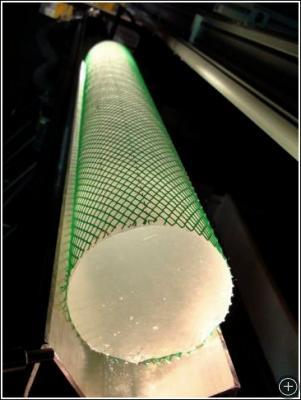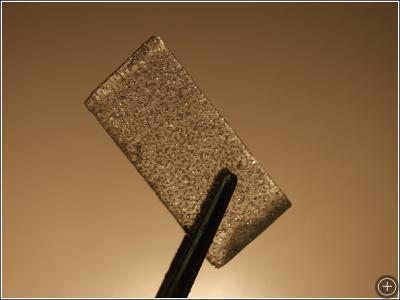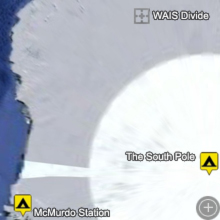
Using ice cores to read the story of the earth’s past climates

A one-meter long piece of ice core illuminated with a light. The green netting on the core is used to help hold the ice together in case it spontaneously fractures.

The bubbles visible in this piece from an Antarctic ice core sample contain carbon dioxide and other gases that were trapped in the ice when formed thousands of years ago. Researchers carefully crush the piece and capture the gases that escape when the bubbles break. This allows them to better understand what carbon dioxide levels were over time.
Heidi Roop, a science technician, worked with more than 100 scientists to recover a 2-mile-long (3.5-km-long) ice core from the West Antarctica Ice Sheet (WAIS) Divide. Imagine, that’s a column of ice twice as tall as the Grand Canyon is deep! The properties of each layer of an ice core reveal a slice of climate history. The WAIS team estimates that this ice core will reveal climate changes that have happened as far back as 100,000 years, a time when woolly mammoths still walked the earth.
During the 2009–2010 season, Heidi helped the WAIS team uncover new chapters of the climate story by drilling deeper into the ice. The WAIS scientists were able to decipher the climate year by year back approximately 40,000 years and at decadal (10-year) resolution from 40,000 to 100,000 years, making it the most detailed ice core record ever collected in the Southern Hemisphere. With the ability to extract annual (1-year) to decadal climate information such as past greenhouse gas concentrations, the climate record developed from WAIS can be directly related to ice cores from Greenland. By comparing records from the Southern and Northern hemispheres, our understanding of global climate change will be more complete. The earth’s climate history will be known in more detail than ever before—and it’s bound to be an interesting story!










